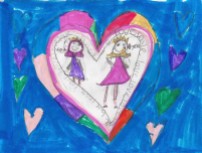When natural foods become scarce over the winter, many of us feel sorry for the deer and want to ease their suffering. When we see hungry animals, we might want to feed them, just to help. But no matter how well-intentioned, putting out food for deer and other big game animals can cause tremendous harm. (Here in Montana, it’s also illegal to intentionally feed big game.)
That’s why I’m sharing my latest Montana Outdoors article, “Death by Feeding: The unintended—and sometimes fatal—consequences of providing food to deer, elk, moose, and other wildlife in winter.” I think many people who feed deer love wildlife and are just trying to help. Unfortunately, those efforts can backfire, in more ways than I could have imagined before I started researching this story. I had no idea that a large enough dose of high-carb food, when an animal’s gut bacteria are adapted to a sparse, low-carb winter diet, could cause a painful digestive disease that can kill a moose in one or two days. I had no idea just how big a role backyard feeding could play in the spread of Chronic Wasting Disease, a slow but certain killer that can affect entire populations of deer.
Fortunately, there are ways we can help deer, elk, and moose through the winter; I’ve included some suggestions from wildlife biologists in the article. But one of the most important ways we can help is to not put out food for them.
If you read the article, please spare a minute for the sidebar on nonnative yews, popular but highly toxic landscaping plants that have also killed big game–including a herd of 50 pronghorn in Payette, Idaho. I have found these at my local nursery with no warnings on the label.





 It’s out! My latest children’s book, What I Saw in Rocky Mountain: A Kid’s Guide to the National Park, was just released by Riverbend Publishing. The book is available directly from
It’s out! My latest children’s book, What I Saw in Rocky Mountain: A Kid’s Guide to the National Park, was just released by Riverbend Publishing. The book is available directly from  Rocky Mountain National Park is an amazing place; it’s hard to beat the park’s special combination of wildlife, scenery, trails, and tundra. And as long as you pay attention to safety (including weather!), it’s a great place to take kids of all ages and abilities. But it pays to plan ahead when visiting busy national parks like “Rocky.” You can find trip-planning information at the park’s website:
Rocky Mountain National Park is an amazing place; it’s hard to beat the park’s special combination of wildlife, scenery, trails, and tundra. And as long as you pay attention to safety (including weather!), it’s a great place to take kids of all ages and abilities. But it pays to plan ahead when visiting busy national parks like “Rocky.” You can find trip-planning information at the park’s website: 


















 Don’t blame me for the focus on this photo. I wasn’t there. This whitetail buck took his own picture and then smashed his nose into my
Don’t blame me for the focus on this photo. I wasn’t there. This whitetail buck took his own picture and then smashed his nose into my 